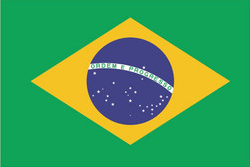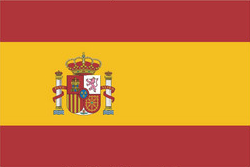WorldView-3, the newest addition to the DigitalGlobe constellation, will enable our customers to see the world in new ways. Not only does it offer the highest resolution in the industry, as you saw in our first imagery blog post, but the satellite also carries a shortwave infrared (SWIR) sensor that will unlock information and insight in new ways.
One of the amazing things that SWIR enables is the ability to see through the dense smoke of an active fire to the ground beneath, as well as locating the flame front and hot spots in the fire. We used WorldView-3 to image a forest fire burning at the Happy Camp complex in California’s Klamath National Forest last week. The image on the left is what you see in the visible part of the spectrum, which is what a standard commercial imaging satellite would see. The smoke completely obscures the ground.
Click here to see the image on the right, and uncover what can be seen with SWIR imagery: the smoke disappears, and the hot spots in the fire become clearly visible. Both of these are overview images that show the full extent of the fire and are not at full resolution. The SWIR image is a “false color” composite made from three of the eight SWIR bands (bands 6, 3, and 1) that coincidentally give an orange color to the fire.
Here is a further zoom around the burn area:
The SWIR bands penetrate smoke to differing degrees. SWIR band 8 has the best smoke penetration; here is a zoomed in shot of the fire line in which no smoke is visible:
But it gets even better. Not only does SWIR see through smoke and detect hot spots, but it can even give an estimate of where the fire is burning the hottest. The last image is a relative temperature “heat map” calculated by looking at all eight SWIR spectral bands (colors) carried on WorldView-3, showing where the fire is most intense.
Source: DigitalGlobe











